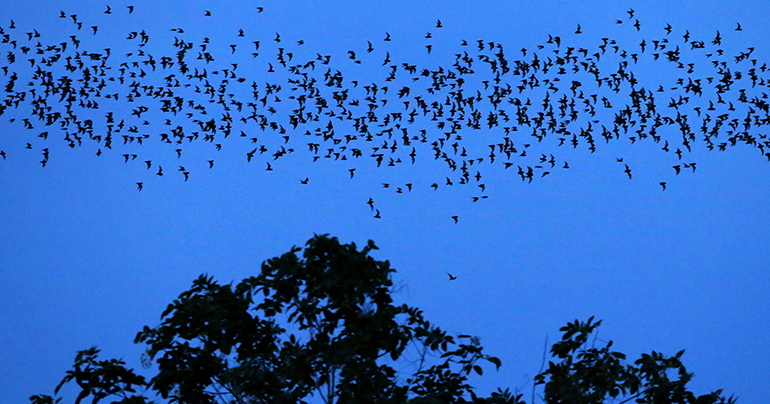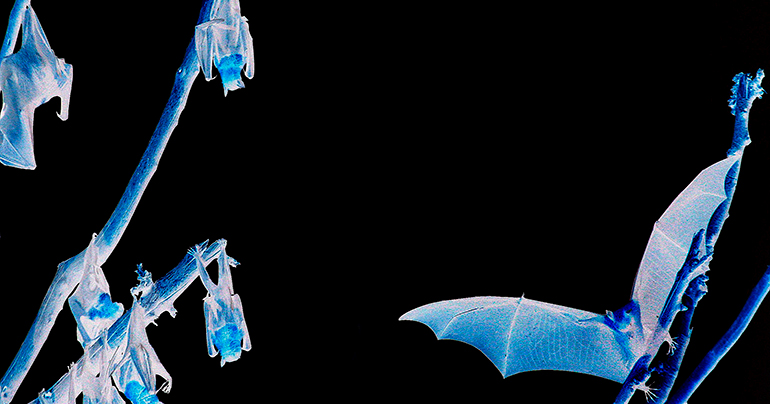According to Tigga Kingston, a researcher with the Southeast Asian Bat Conservation Research Unit, Southeast Asia is home to 379 of the 1370 bat species in the entire world – and yet rapid forest destruction threatens to wipe out 23% of the region’s bat population in the near future.
“Southeast Asia is really, really important in the global text. Yet, one quarter of Southeast Asian bats are in trouble,” Kingston said. “That’s a huge problem, 23% threatened or near threatened. By threatened, what we’re saying is there’s a much greater probability that they will go extinct unless we change what’s happening to them now.”
Countries like Singapore have seen a rapid decline in bat populations in recent years due to land and habitat loss, according to researchers. While it is estimated that pre-colonial Singapore was home to nearly 70 bat species, fewer than half still remain.
Using Singapore as a test case to illustrate the effects of deforestation on bat survival, researchers have estimated that up to 40% of Southeast Asia’s regional bat species will likely be extinct by 2100.
The loss of bats across Southeast Asia could have a more impactful effect on everyday life than most realise, as they play an important role in pollination and pest control.
In a study published last year, scientists noted that durian, the potent-smelling fruit that has long been a staple in the region, depends on pollination by endangered fruit bats called “flying foxes”. The fate of the fruit, then, is tied to the continued existence of these bats – and in the balance hang the millions of dollars generated in local and international trade of durian across Southeast Asia.
“The durian is a fascinating plant. With its flowers pollinated by bats and its seeds dispersed by large animals like elephants, it beautifully exemplifies the importance of plant and animal interactions,” said Dr. Ahimsa Campos-Arceiz, one of the co-authors of the 2017 study. “We hope this study brings attention to the urgency of conserving flying foxes in Southeast Asia.”

But conservation efforts for endangered species remain at a low in the region. Deforestation has been defined as a “modern day plague” in Southeast Asia, with the region having already lost more than 50% of its original forest cover.
In Indonesia, smallholder farmers and transnational companies continue to set forest fires in the hopes of clearing land for profitable crops. In Malaysia, endangered species are still considered delicacies on which people dine in the pursuit of mysterious – and unfounded – nutritional benefits. In Cambodia, rampant illegal logging continues to destroy forests.
As a result, Southeast Asian deforestation has outpaced even most researchers’ previous predictions. According to a study using satellite imaging data released last month, the region lost 293,000 square-kilometres of forest between 2000 and 2014, an area the size of Italy.
And as the forests disappear, the animals living within them do, too.
“If we lose forests as habitats, we lose the bats,” said Kingston at the recent bat conference. “To move forward in protecting the bats, we must protect the remaining forests.”


